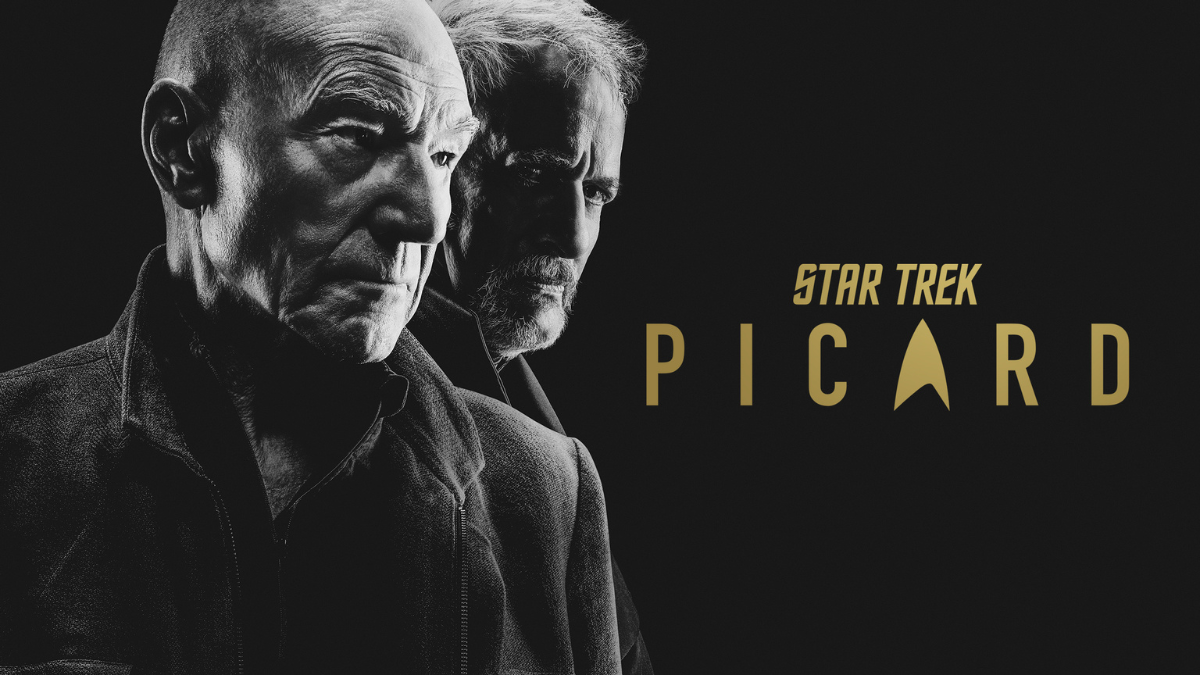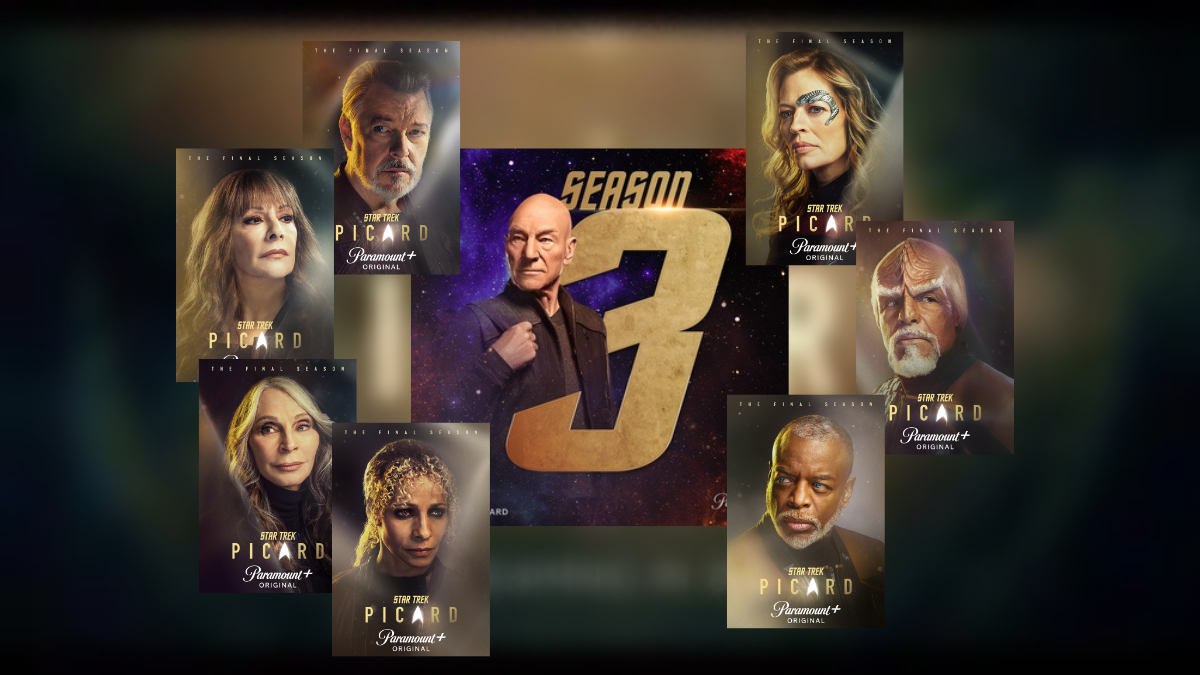REVIEW: How does the new audio drama Star Trek: Picard No Man's Land compare to past audio adventures?

The cover for the Star Trek: Picard No Man’s Land audio drama
Editor’s note: Daily Star Trek News is giving away 10 copies of No Man’s Land FREE! To find out how to enter, visit our giveaway page. Entries close 11:59pm PT on Saturday, March 5, 2022.
FEBRUARY 17, 2022 - Since the radio was invented, it has been used to tell stories. In its Golden Age, before television was invented, families would sit around their RCA Victor radios and let full casts entertain them on shows like The Shadow, Fibber McGee and Molly, The Mercury Theatre on the Air, and the excellent science fiction anthology series X Minus One.
Star Trek has dabbled in audio adventures in the past, as well. In the 1970s, Peter Pan Records released a series of records for children based on The Original Series, detailing new adventures with a full cast of actors playing the roles of Captain Kirk and his gallant crew. In the mid-1990s, Simon & Schuster released a trilogy of audio dramas featuring George Takei as Captain Sulu, in command of the Excelsior. These weren’t exactly full-cast productions. Aside from Takei, they featured one or two other actors and the stories were mostly told as a series of log entries and messages to other, unheard characters.
Star Trek: Picard No Man’s Land, the franchise’s first full-cast audio drama for adults, will be released next week. Last month Simon & Schuster released a nearly two-minute preview of the adventure, but we got our hands (or rather our ears) on a copy of the full production this week. How does it stack up against Trek’s past forays into the audio world? Let’s take a look.
Story
Star Trek: Picard No Man’s Land, written by Kirsten Beyer and Mike Johnson, bridges the gap between Picard season one, which ended on March 26, 2020, and season two, which hits the small screen beginning March 3, 2022. It opens with Raffi and Seven of Nine taking some R&R. Their getaway is interrupted, however, when a Fenris Ranger asks Seven to help him stop a dangerous Romulan Warlord from achieving his as-yet-unkown goal. The program runs about 1 hour, 40 minutes, slightly longer than a classic Trek 2-parter like “The Best of Both Worlds,” and it seems to be the ideal length. It doesn’t feel bloated, but there’s time for action and romance and even some comic beats.
It’s apparent from the outset that No Man’s Land respects Star Trek canon. In the first scene, Seven refers to Axum, a Borg drone introduced in Voyager’s season 6 cliffhanger, “Unimatrix Zero.” This is no surprise since Beyer, a co-creator, writer, and producer on Star Trek: Picard, has written eleven Voyager novels. She’s also been on the writing team for Star Trek: Discovery since the beginning. She knows her stuff!
Co-author Mike Johnson isn’t exactly a Trek newbie, either. He’s written numerous franchise tie-in comic books, including the Star Trek/Green Lantern crossover, Star Trek: Starfleet Academy, and the Star Trek (2009) comic adaptation. He and Beyer have worked together before, too, on several comics based on Discovery and the Picard countdown comics.
But writing for audio is different than writing for other media. Your audience has nothing to see and no narrator to tell them what they’re supposed to visualize. Much of the data they need comes from the characters’ lines of dialogue and it can be tricky to deliver this information without being ham-fisted about it. Beyer and Johnson pull it off for the most part, but there are one or two times when they falter. I’m thinking of one particular moment when a character drops a tray of food. After the clatter of the tray dies down, Rynan, the Romulan villain, cries out, “Fool! Now I’m wearing my meal!” which feels like a slightly clumsy way to let you know that the main bad guy now has food down his front.
This is a minor quibble, however, and the script is usually very tight, with fast-paced action sequences throughout and a small mystery for our heroes to unravel. But of course, all the action and mystery are only a part of the story, and maybe not even the most important part.
“Cultural artifacts are important, but not essential. So we focus on the people,” Raffi says early on, and it’s the people that this story seems to care about most. The plot is designed to showcase Raffi and Seven’s budding relationship and it’s through this lens that we learn more about the characters. The story highlights how differently they perceive relationships and the characters they meet help them to come to terms with their feelings for each other.
Cast
The headliners here are, of course, Michelle Hurd and Jeri Ryan, Raffi Musiker and Seven of Nine respectively. Their performances are spot-on, helping to make the audio drama truly feel like a spinoff of Picard. As any actor should, they know their characters backward and forward and understand how they would behave in any situation. Fans of the Paramount+ show will automatically be able to picture the expressions on their faces at any given moment, plus the two performers have great chemistry, which may be why the folks behind Picard decided to pair them up in the first place.
The cast is rounded out by Jack Cutmore-Scott, John Kassir, Fred Tatasciore (Lieutenant Shaxs on Star Trek: Lower Decks), Chris Andrew Ciulla, Lisa Flanagan, Gibson Frazier, Lameece Issaq, Natalie Naudus, Xe Sands, and Emily Woo Zeller. There’s not a weak link in the bunch and their performances add color and variety to the production. Raffi and Seven are the only established characters in the story, so the rest of the cast had the luxury of creating their characters from scratch. Not an easy task, but the strong script surely gave them a solid place to begin, and their characterizations are wonderful.
Sound Design
Sound Design is critical to any audio presentation. I’ve already mentioned the data the audience gets from the dialogue and the Sound Design feeds them the rest of the information. If the dialogue and sound work well together, then the bits of information that neither of those supplies to the audience can be filled in by their imaginations. A bad sound design can be distracting and put the listener off.
Fortunately, No Man’s Land’s Sound Design is top-notch. Using sound effects from Picard, Roy Harter and Christina Zarafonitis create a lush soundscape, putting you inside each scene, whether they take place in Raffi’s trailer, on the bridge of a ship, or in a battle.
Much of the original music is “source music,” meaning that it is music that the characters are themselves listening to, coming out of a speaker, say. Underscoring is only used at key moments throughout, which is a good choice, one that many audio dramas seem to make. The music was created by Liza Carbé, Jean-Pierre Durand, and David Permenter, with vocals by Lisa Bueno, and it is never distracting.
Harter took all the elements - vocals, effects, and music - and mixed them to perfection. It’s easy to mix any of the audio elements too high or low, taking the listener out of the experience as they struggle to hear the dialogue or reach desperately for the volume control when a sound effect threatens to deafen them. No Man’s Land sounds great, and never makes you wish the designer had been a little more subtle.
Verdict
You don’t have to listen to Star Trek: Picard No Man’s Land. There’s nothing here, I suspect, that will have a lasting (or perhaps any) impact on the screen adventures of Jean-Luc Picard and his motley crew. And like any Trek extended universe product, I believe the audio drama will be considered canon…until it’s not. But, with its tight script, delightful performances, and lavish sound design, combined with a few subtle hints about where we will find our characters at the beginning of season two, it’s the first Trek worthy of being called a “full-cast audio drama.” It’s fun to hear Hurd and Ryan’s voices in a new adventure and it will certainly scratch an itch for fans anxious to dive back into the Paramount+ series.
Star Trek: Picard No Man’s Land will be released on Tuesday, February 22, 2022, and you can preorder it now on Amazon and Audible.
T is the Managing Editor for Daily Star Trek News and a contributing writer for Sherlock Holmes Magazine and a Shakespeare nerd. He may have been the last professional Stage Manager to work with Leonard Nimoy, has worked Off-Broadway and regionally, and is the union Stage Manager for Legacy Theatre, where he is currently working with Julie Andrews. after which he’ll be working on Richard III at Elm Shakespeare Company.



